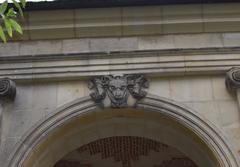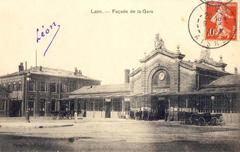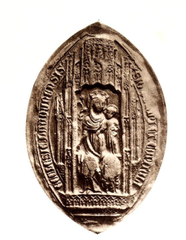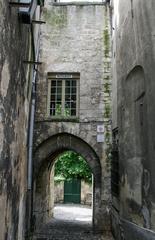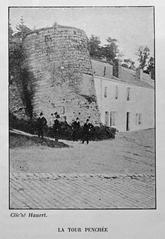Colombier of the Bishops of Laon: Visiting Hours, Tickets, and Historical Visitor Guide
Date: 14/06/2025
Introduction
Perched in the historic upper town of Laon, France, the Colombier of the Bishops of Laon—also known as the Bishop’s Dovecote—is a unique testament to the city’s medieval heritage and ecclesiastical authority. This rare structure offers visitors a window into the intertwined history of feudal privilege, agricultural innovation, and the enduring power of Laon’s bishops from the Middle Ages through the French Revolution. This comprehensive guide will provide you with essential information for visiting the Colombier, including opening hours, ticketing, accessibility, travel tips, and nearby attractions. Whether you are a history enthusiast, architecture lover, or cultural traveler, this guide will help you explore the enduring legacy of the Colombier of the Bishops of Laon (Britannica; Venere; choosewhere.com).
Table of Contents
- Historical Context: Roman and Medieval Foundations
- The Bishops’ Estates and Feudal Privilege
- The Colombier’s Role in Ecclesiastical Life
- Political Upheaval and Ecclesiastical Authority
- Architectural Features and Preservation
- Visiting the Colombier: Practical Information
- Frequently Asked Questions (FAQ)
- Summary & Recommendations
- References & Further Reading
Historical Context: Roman and Medieval Foundations
Laon’s strategic hilltop location has been valued since antiquity, first fortified by the Romans, who named it Laudunum (Britannica). In the late 5th century, Saint Rémi established a bishopric here, cementing Laon’s dual military and ecclesiastical importance. Over the centuries, the bishops of Laon became both spiritual leaders and major landholders, playing a pivotal role in shaping the city’s development and constructing estates that included structures like the Colombier.
The Bishops’ Estates and Feudal Privilege
Throughout the Carolingian era and the Middle Ages, Laon’s bishops controlled expansive estates. The right to own a dovecote (colombier) was a highly regulated privilege, typically reserved for nobility and high-ranking clergy—its presence on the bishop’s estate served as a visible symbol of feudal authority (Venere). The dovecote’s role extended beyond food supply; it was a mark of social status and economic power, underscoring the bishop’s dual spiritual and temporal authority.
The Colombier’s Role in Ecclesiastical Life
More than a utilitarian farm building, the Colombier was integral to the bishop’s household economy. It provided meat, eggs, and highly prized fertilizer (guano) for the bishopric’s self-sustaining estates and supported the needs of religious institutions like the Abbey of St. Vincent (Bibliothecarius Modernus). The structure’s size and prominence reflected the bishop’s status among the region’s elite.
Political Upheaval and Ecclesiastical Authority
The 12th century brought significant social unrest to Laon, as citizens challenged episcopal authority during communal uprisings (UBC History). The bishop’s estates, including the Colombier, became symbols of privilege and targets of resentment. Despite these upheavals, the bishopric remained influential until the French Revolution, after which church properties were nationalized or destroyed (Britannica). The survival of the Colombier into the modern era attests to its resilience as a historical monument.
Architectural Features and Preservation
The Colombier of the Bishops of Laon is a classic example of medieval dovecote architecture. Built primarily from local limestone, it features thick walls, a conical slate roof, and rows of internal nesting boxes (boulins) arranged for maximum efficiency. A central rotating ladder (potence) allowed caretakers to access nests for maintenance. Its cylindrical or polygonal design harmonizes with Laon’s medieval skyline, complementing nearby landmarks like the cathedral and episcopal palace (choosewhere.com; France-Voyage).
Visiting the Colombier: Practical Information
Visiting Hours
- General Access: The Colombier is not open daily; it is accessible mainly during guided tours, special heritage events (such as the September Journées du Patrimoine), and by arrangement with the Laon Tourist Office.
- Nearby Sites: Laon Cathedral is open daily from 8:30 AM to 6:30 PM (Tourisme Pays de Laon).
Tickets and Entry
- Exterior Viewing: Free and available at any time from public areas.
- Guided Tours: Interior visits are available during special events; tickets typically range from €5 to €10, with discounts for children, students, and seniors.
- Booking: Reserve in advance, especially for heritage events and weekends (Tourisme Pays de Laon).
Accessibility
- Physical Access: The upper town features cobbled streets and steep approaches. The Colombier’s interior is not wheelchair accessible, but the exterior can be viewed from accessible public areas.
- Facilities: Public restrooms, cafés, and parking are available nearby. The POMA funicular connects the lower and upper towns (France-Voyage).
Guided Tours
- Languages: Tours are primarily in French, with English options during peak seasons.
- Group Size: Tours are limited in size for an intimate experience and preservation reasons.
- Special Events: The Colombier is often featured in thematic tours during festivals and Heritage Days.
Getting There
- By Train: Laon is 1h30 from Paris (Gare du Nord), with the station in the lower town and access to the upper town via funicular or on foot (Eupedia).
- By Car: Easily accessible via the N2 highway or E17 motorway, with clear signage to the historic center.
Nearby Attractions
- Laon Cathedral: A masterpiece of early Gothic architecture (Tourisme Pays de Laon).
- Episcopal Palace: Now the courthouse, showcasing medieval architecture (France-Voyage).
- Laon Museum: Housed in a former Templar Commandery (France-Voyage).
- City Ramparts: Seven kilometers of medieval walls with panoramic views (The Crazy Tourist).
Visitor Tips
- Wear comfortable shoes for cobbled streets and uneven terrain.
- Bring water, especially in summer.
- For the best photography, visit in the early morning or late afternoon.
- Check event calendars for special openings and cultural events.
- Download the Audiala app for self-guided tours and interactive maps.
Frequently Asked Questions (FAQ)
Q: What are the Colombier visiting hours?
A: The Colombier is accessible mainly during guided tours and special events. Check with the Laon Tourist Office for up-to-date schedules.
Q: Do I need tickets to visit the Colombier?
A: Exterior viewing is free. Interior visits during tours or events require tickets, usually €5–10.
Q: Is the Colombier wheelchair accessible?
A: The interior is not, but the exterior can be viewed from accessible areas.
Q: Can I take photographs?
A: Yes, exterior photography is encouraged. Interior photography may be restricted; ask your guide.
Q: What other sites should I visit?
A: Laon Cathedral, the Episcopal Palace, Laon Museum, and the ramparts are all within walking distance.
Summary & Recommendations
The Colombier of the Bishops of Laon is a rare and evocative monument that encapsulates the city’s medieval ecclesiastical heritage and feudal past. While interior access is limited, the site is an essential stop on any historical tour of Laon, especially when combined with nearby landmarks. Plan your visit during heritage events for the most comprehensive experience, and use resources like the Audiala app to enhance your exploration. Stay updated via the Laon Tourist Office and participate in local festivals to fully appreciate Laon’s rich cultural tapestry.
